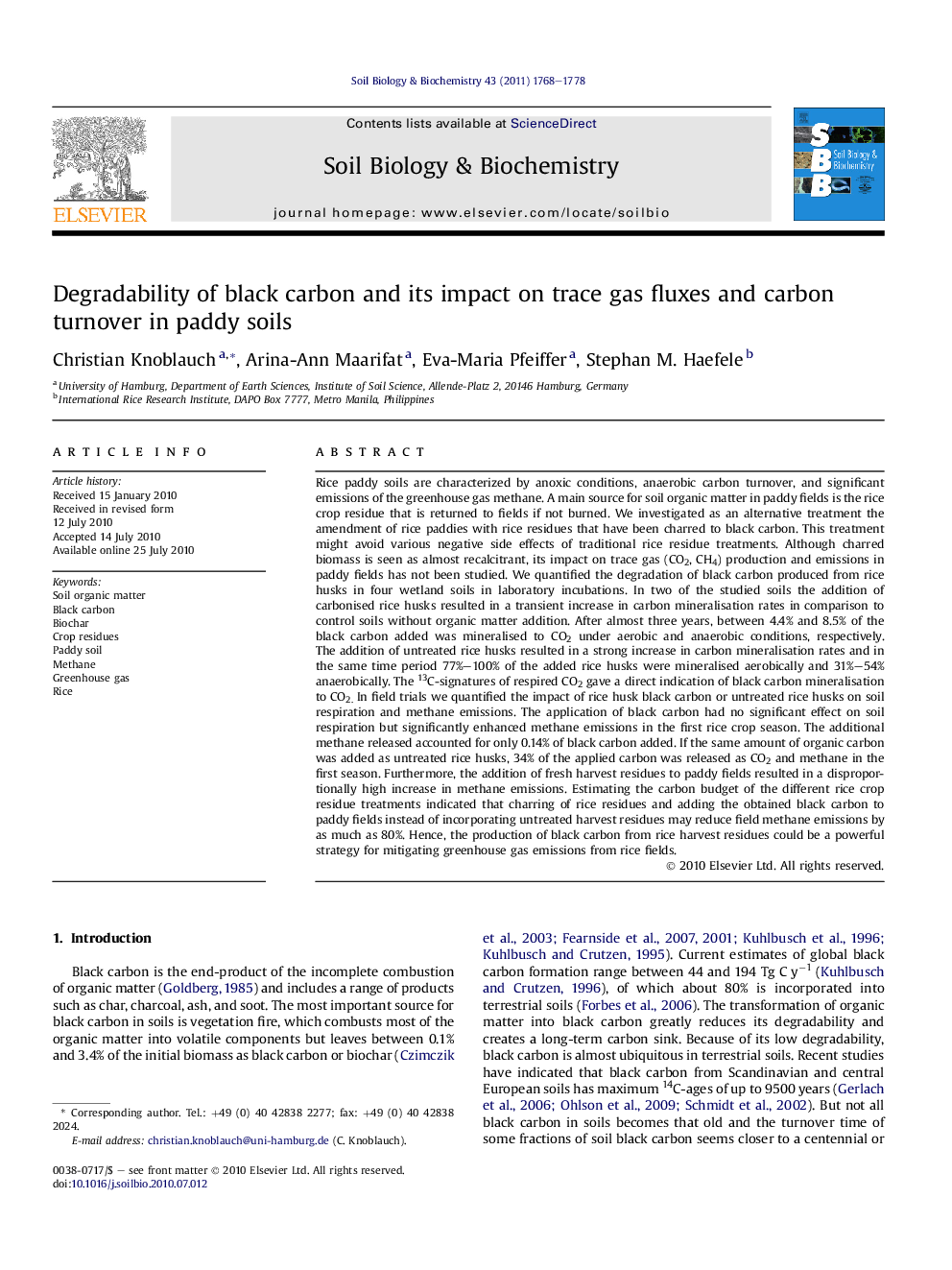| Article ID | Journal | Published Year | Pages | File Type |
|---|---|---|---|---|
| 2025236 | Soil Biology and Biochemistry | 2011 | 11 Pages |
Abstract
Rice paddy soils are characterized by anoxic conditions, anaerobic carbon turnover, and significant emissions of the greenhouse gas methane. A main source for soil organic matter in paddy fields is the rice crop residue that is returned to fields if not burned. We investigated as an alternative treatment the amendment of rice paddies with rice residues that have been charred to black carbon. This treatment might avoid various negative side effects of traditional rice residue treatments. Although charred biomass is seen as almost recalcitrant, its impact on trace gas (CO2, CH4) production and emissions in paddy fields has not been studied. We quantified the degradation of black carbon produced from rice husks in four wetland soils in laboratory incubations. In two of the studied soils the addition of carbonised rice husks resulted in a transient increase in carbon mineralisation rates in comparison to control soils without organic matter addition. After almost three years, between 4.4% and 8.5% of the black carbon added was mineralised to CO2 under aerobic and anaerobic conditions, respectively. The addition of untreated rice husks resulted in a strong increase in carbon mineralisation rates and in the same time period 77%-100% of the added rice husks were mineralised aerobically and 31%-54% anaerobically. The 13C-signatures of respired CO2 gave a direct indication of black carbon mineralisation to CO2. In field trials we quantified the impact of rice husk black carbon or untreated rice husks on soil respiration and methane emissions. The application of black carbon had no significant effect on soil respiration but significantly enhanced methane emissions in the first rice crop season. The additional methane released accounted for only 0.14% of black carbon added. If the same amount of organic carbon was added as untreated rice husks, 34% of the applied carbon was released as CO2 and methane in the first season. Furthermore, the addition of fresh harvest residues to paddy fields resulted in a disproportionally high increase in methane emissions. Estimating the carbon budget of the different rice crop residue treatments indicated that charring of rice residues and adding the obtained black carbon to paddy fields instead of incorporating untreated harvest residues may reduce field methane emissions by as much as 80%. Hence, the production of black carbon from rice harvest residues could be a powerful strategy for mitigating greenhouse gas emissions from rice fields.
Related Topics
Life Sciences
Agricultural and Biological Sciences
Soil Science
Authors
Christian Knoblauch, Arina-Ann Maarifat, Eva-Maria Pfeiffer, Stephan M. Haefele,
